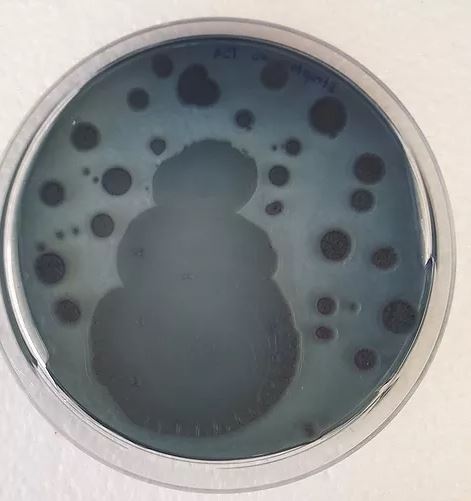By Philippa Rickard

Eureka moments typically come during the most mundane activities. Washing the dishes, cutting the grass, showering, driving. It was during one long motorway stretch that I realised surprised: “The intellectual challenge is less than I anticipated, but the psychological challenge is so much more”. I was talking about my PhD, and my post-grad peer in the passenger seat nodded enthusiastically in agreement.
The PhD experience, for me, is a perpetual swing from feeling like a dog with a ball to a cat in a bath, great accomplishment to existential angst and back again. I have lost count of the number of times that I have burst into tears in front of my supervisors; because of malfunctioning machines, workload bottlenecks, exhaustion, even just ideas for further experiments. They tell me that it’s not the be-all-and-end-all, and they’re right, it’s not. There are so many bigger things happening in the world: wars, famine, disease, poverty, climate change. In the bigger picture, at this moment, what I’m doing, what I’m stressed about doesn’t actually matter. What I am suffering is, by popular definition, very much a ‘first world problem’. While this is a well-meaning truth, and provides some much needed perspective, ultimately it undermines my anxiety and in turn intensifies the isolation.
The University bubble is very insular, and research is a bubble within that bubble. The stage of your studies doesn’t matter or whether you are dealing with exams, coursework or general university life; stress, loneliness, anxiety and unworthiness are commonplace. You are not alone. The fact that these feelings are somewhat routine in academia is not OK (and that is another story all together), but there are ways to help yourself.
-
Talk about it. To anyone inside or outside of your university life. You are not a failure for feeling unable to cope, and you certainly aren’t letting anyone down by admitting it. You will be surprised by how many of your peers feel the same.
-
Plan your time each day. Especially important is to plan free time. Free time is not a luxury. If you struggle to find it, write it in your diary and stick to it.
-
Break down your to-do list, and each task, into manageable chunks. Group things into how soon they need to be done and how critical it is that they actually get done.
-
Assign different tasks to different times of day, according to your own cycles of focus and productivity.
-
Find your own work locations, be it a quiet office, a noisy café or at home.
-
Sleep properly.
-
Eat properly.
-
Take holidays.
-
Spend time with the important people in your life.
-
Do what works for you and do not compare yourself to others.
Often I feel as if I am leading a double life. I keep my ‘work’ life very much separate to my ‘home’ life. Being a PhD student is not my whole identity. Actually, it doesn’t even come close to being half of my identity. I struggle the most when I have to make sacrifices in my home life to make room for academia. To mitigate this I have learned to plan my time, down to the hour, weeks in advance. First, I plan in my time dedicated to what I enjoy, which for me is my chosen sport. Second, in goes digital or face-to-face time with friends and family (who I have normally been neglecting). Then, dead last, in goes my work time in line with deadlines and other commitments. This is by no means a perfect process, curve balls get thrown that you can’t control, and dealing with those is something I’m still learning.
That is the point of all this though. Learning. Nothing is perfect, no one knows everything, and learning is a perpetual process. There is more to life than academic credit, learn to be kind to yourself.
If you are experiencing any difficulties please contact the Just Ask team [http://www.ncl.ac.uk/justask/], Nightline [https://www.nusu.co.uk/support/nightlinenightbus/], Student Wellbeing [http://www.ncl.ac.uk/students/wellbeing/support/resources/sources.htm] or the Samaritans [http://www.samaritans.org/how-we-can-help-you/contact-us].






 https://pixabay.com/en/lego-doll-the-per-amphitheatre-1044891/
https://pixabay.com/en/lego-doll-the-per-amphitheatre-1044891/


